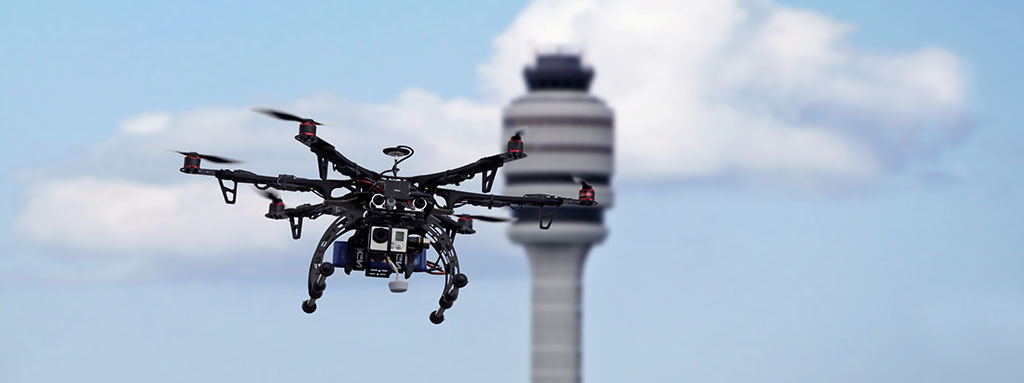
The undoubted influence exerted by technological evolution in all facets of life is as evident as it is unpredictable in the majority of cases. A clear example of this is the appearance, development and boom of civilian-use drones. They have suddenly become ever-present in today’s society with applications which range from strictly recreational use to productive uses (filming, security, inspections, courier services, communication, etc.).
A significant number of countries are developing legislation to limit the indiscriminate or uncontrolled use of these small aircraft.
There is no doubt that drones provide a large number of solutions to daily needs. They have paved the way for new professional applications, uses and even developments which were unthinkable just a few years ago. They have, however, also become a risk for certain activities which now have to view their presence as a threat.
In the case of airports, several incidents have recently taken place involving aircraft and drones. The blame for all these incidents can be squarely laid on the drones, while the safety risk has affected the aircraft.
To complicate matters even further, most of these situations come about during landing or take-off manoeuvres, when the workload in cabins is greatest and thus the stress to which crews are subjected. For instance, 241 incidents involving drones and aircraft where reported in the United States last year. Something similar is happening in the rest of the world. Serious incidents were also recorded in Paris, London, Santiago, Bilbao, Rome and Athens airports, to cite just a few examples.
A significant number of countries are developing legislation to limit the indiscriminate or uncontrolled use of these small aircraft, especially in hazardous environments like airports. Some countries already regulated their use some years ago. But that is not the only factor. Air authorities and organisations are now focusing on other collateral actions like prevention or detection.
Apart from the existence and fulfilment of the Law by drone pilots, devices and software are being tested that impede drones from entering sensitive airspaces by suppressing their capabilities in the context of prevention.
Concerning detection, the range of solutions is much broader. The first challenge is to have reliable instruments available which allow drones to be located. Then the actions proposed (some of which are already in use) range from using birds of prey to capture or bring down drones to net launchers which trap them in mid-flight.
Fortunately, the above-mentioned incidents have not led to any serious consequences to date. It is precisely now when all the resources should be made available to prevent more serious consequences in the future, since the number of drones has not stopped growing.
What do you think?
¬ The USA is looking into technologies to deactivate drones near airports (ENG)
¬ The EU plans to have all drones registered (ENG)
¬ Civilian-use drones, a double-edged technology (ESP)

